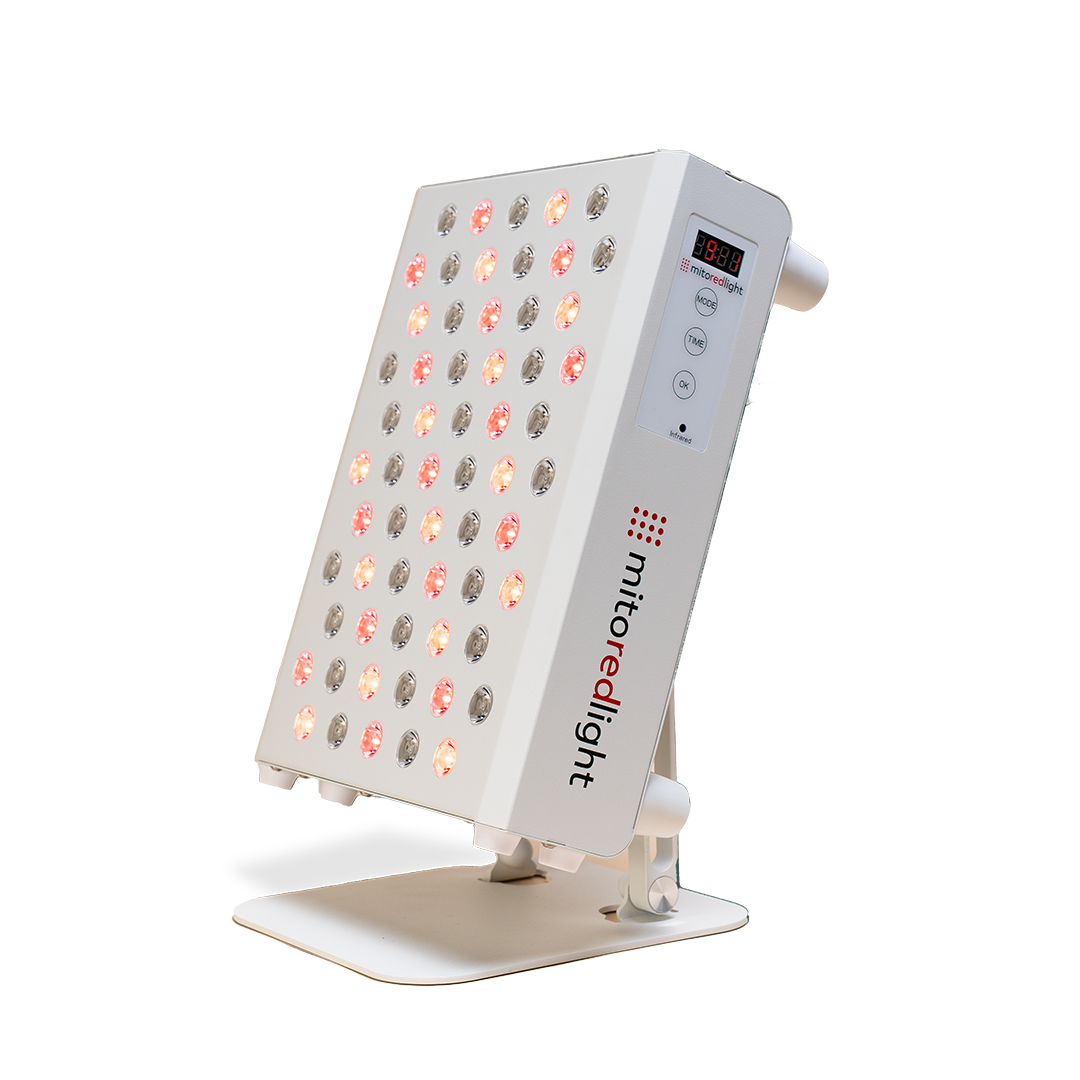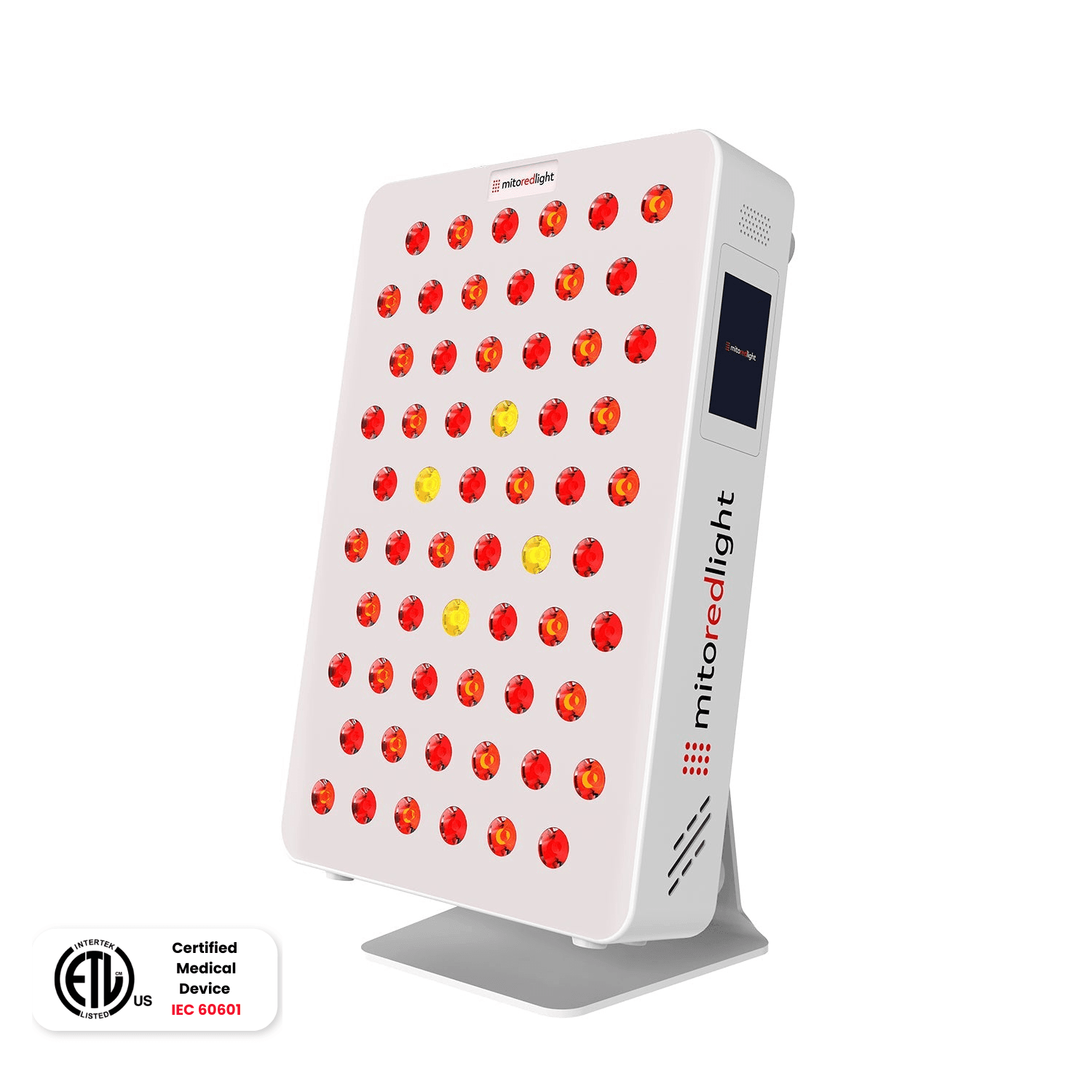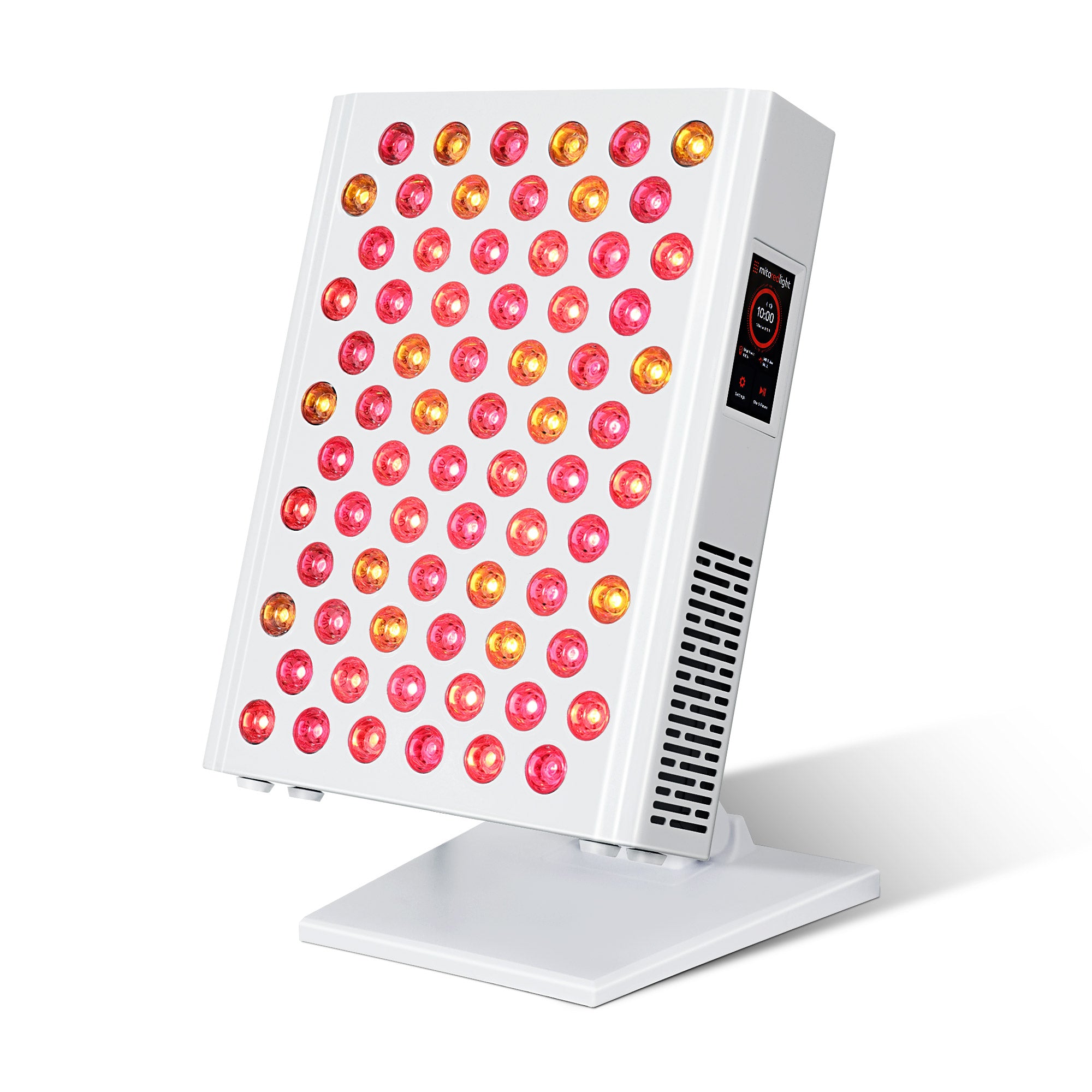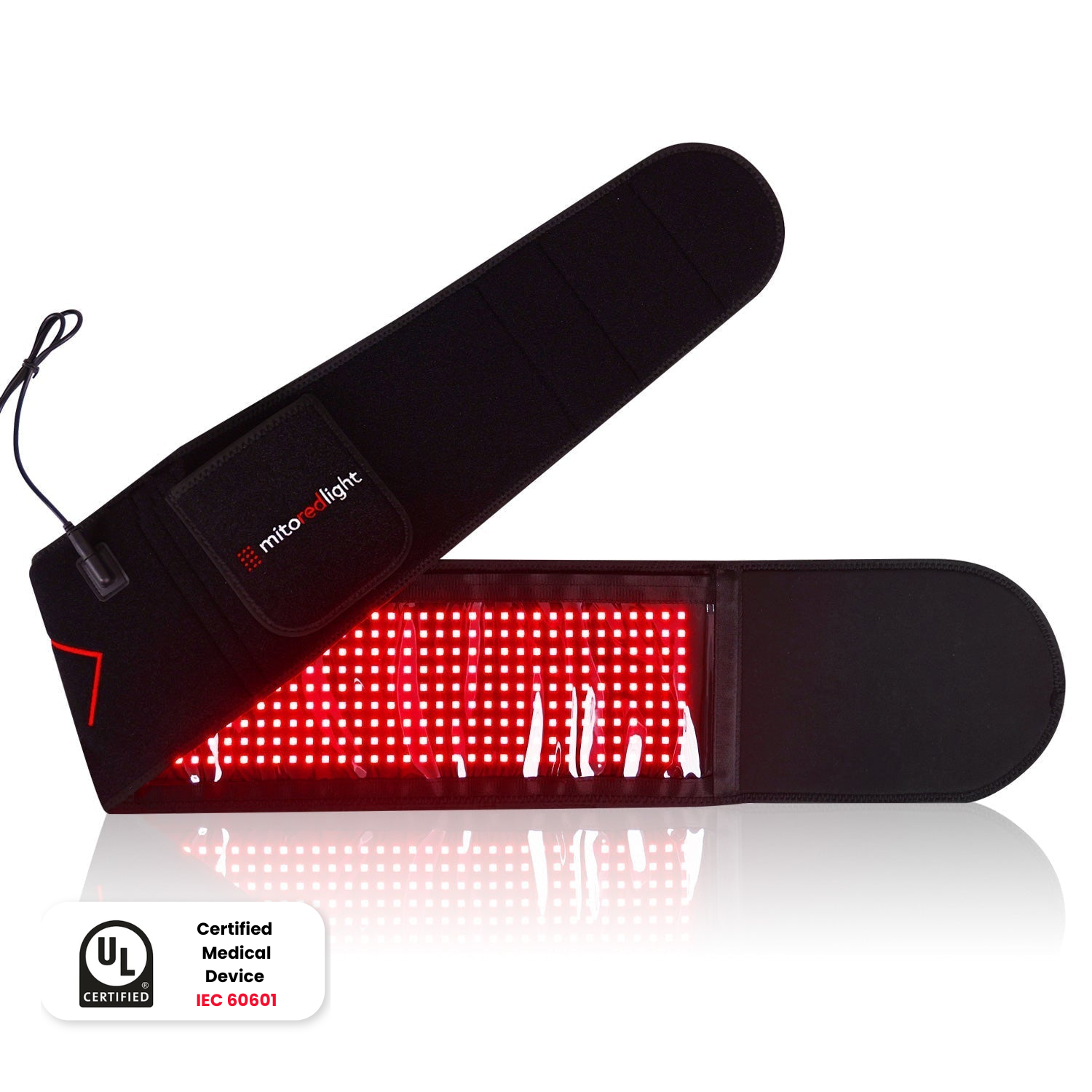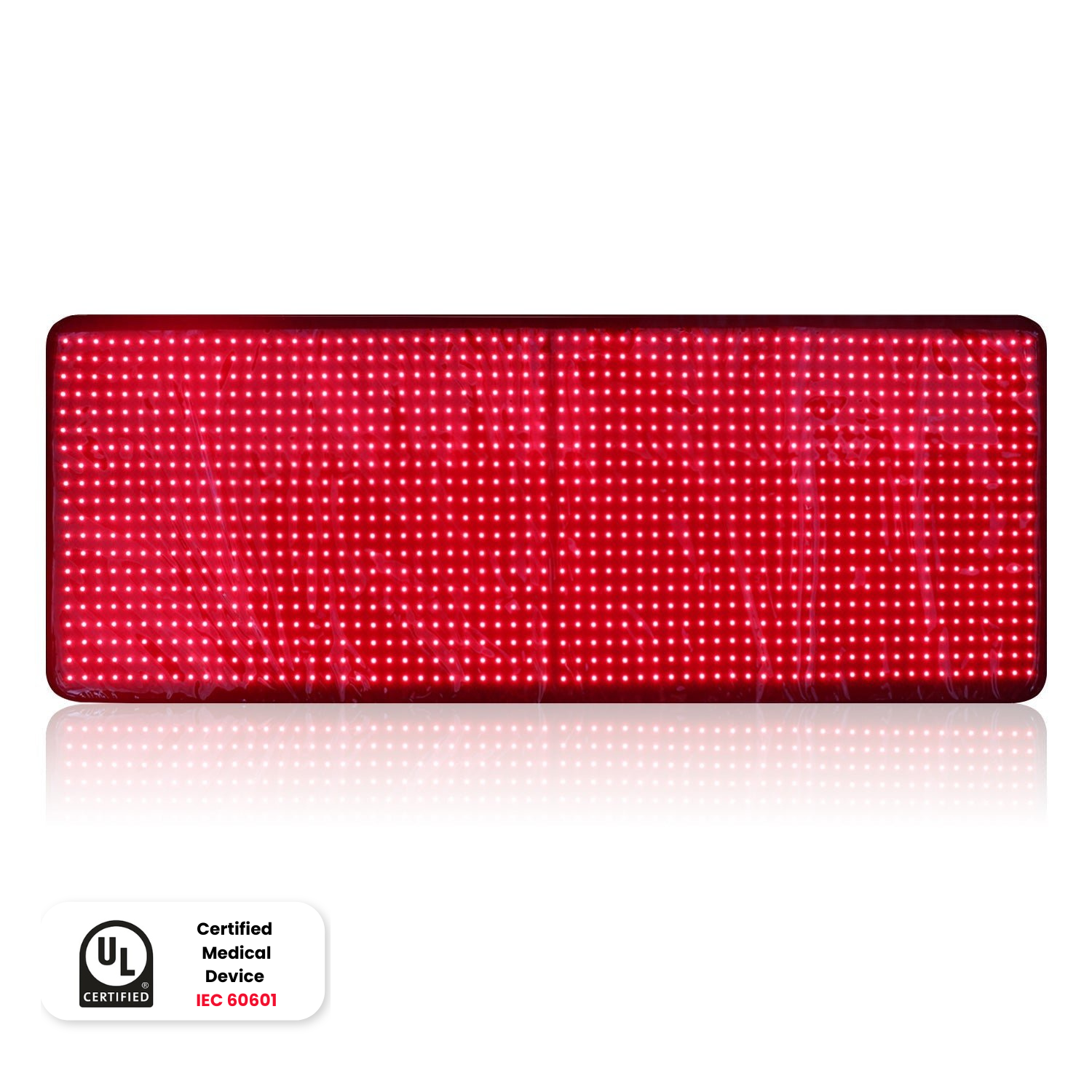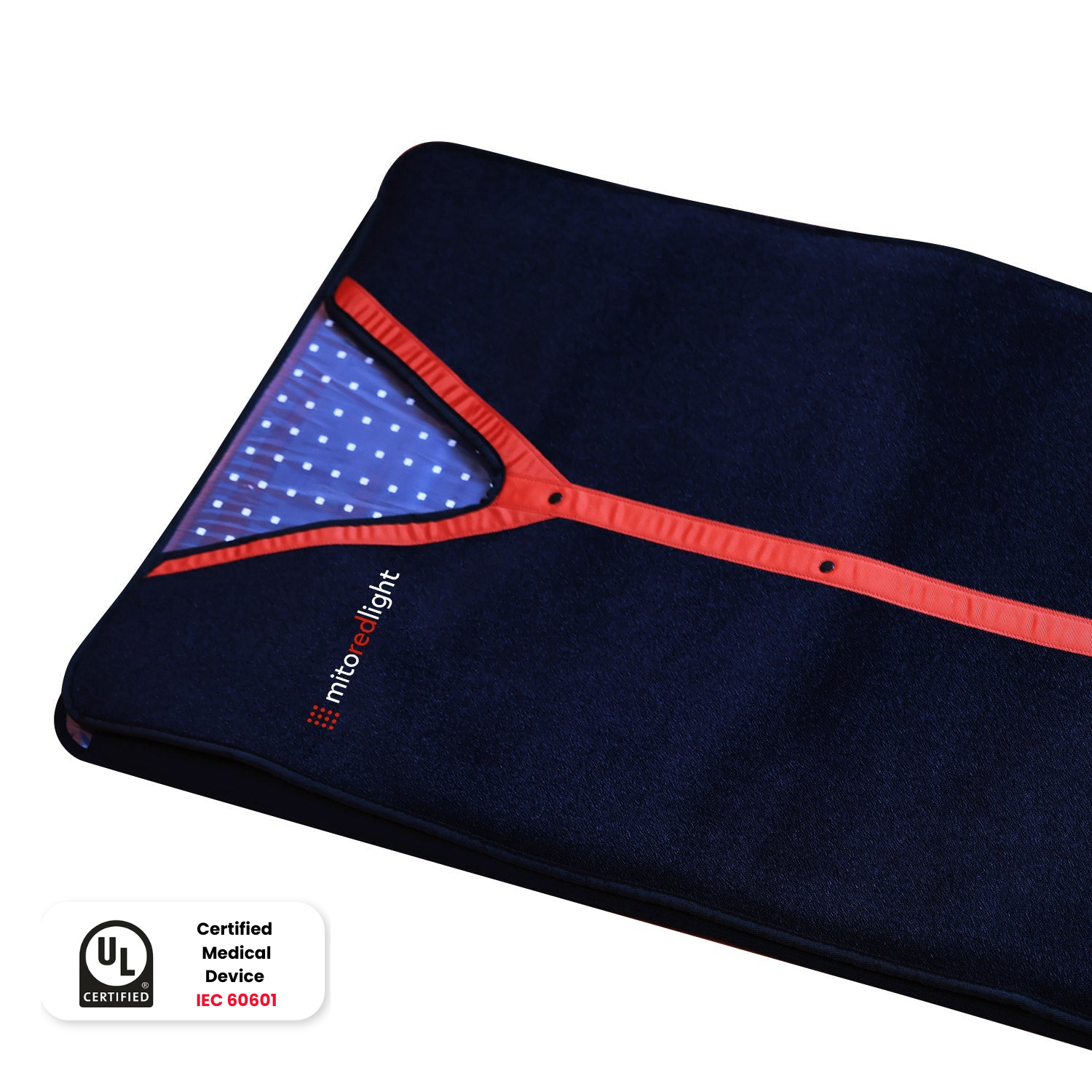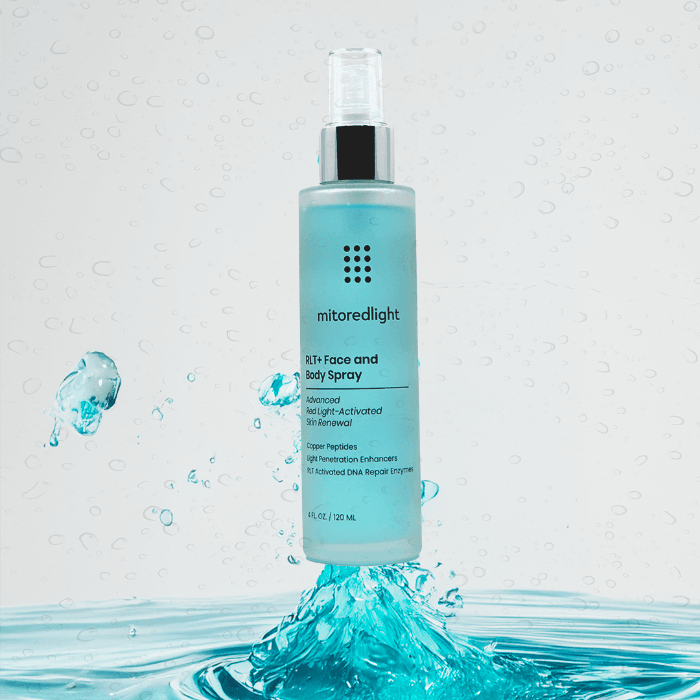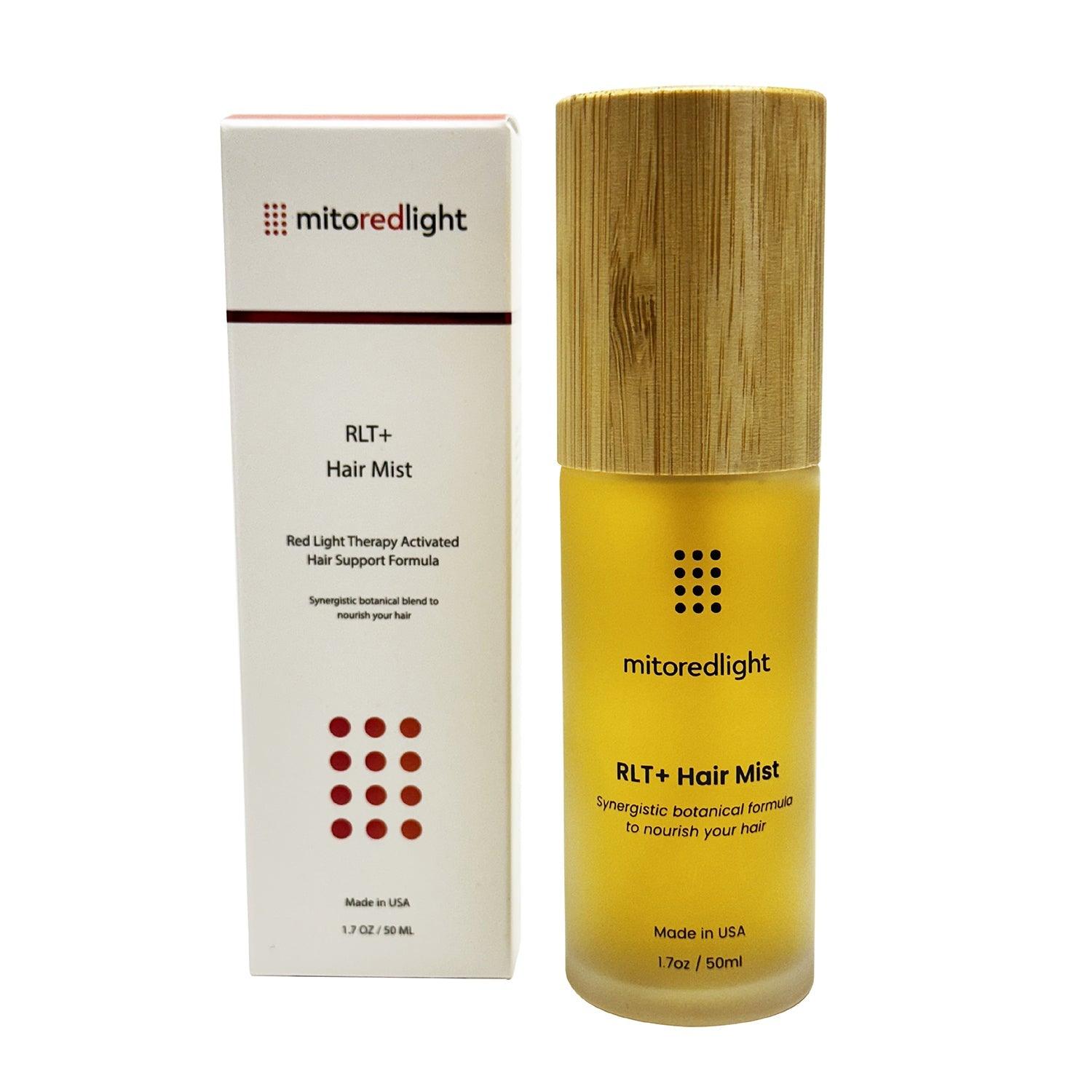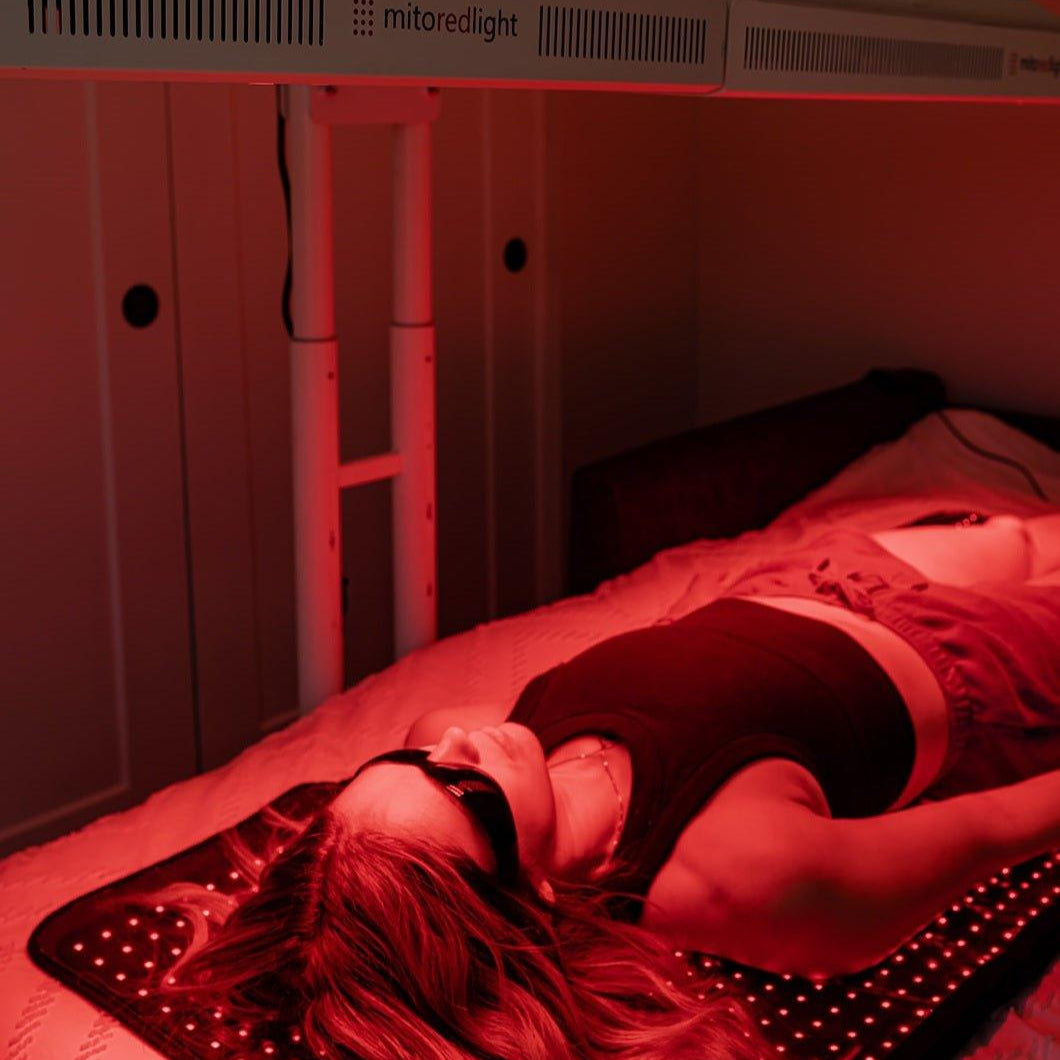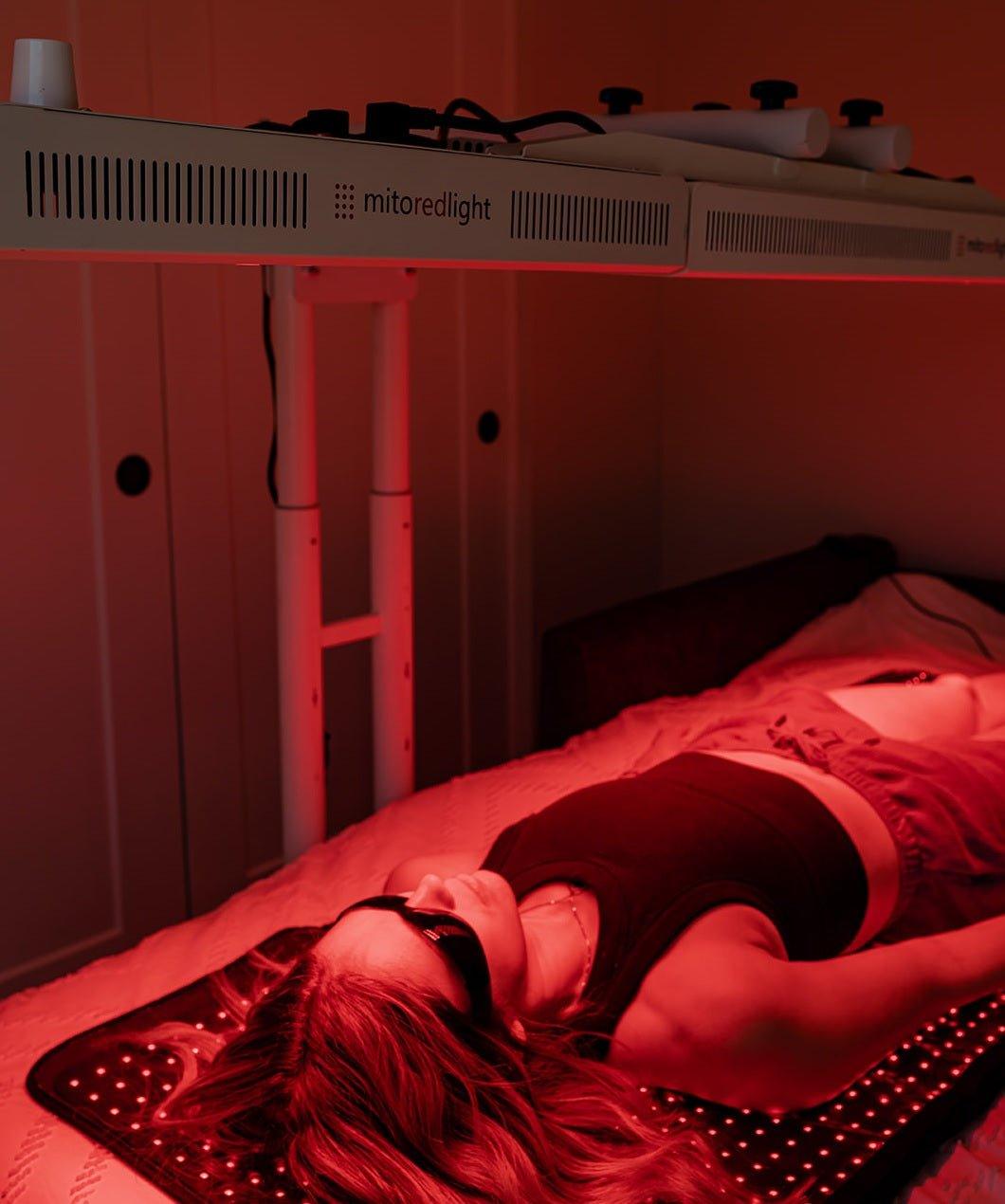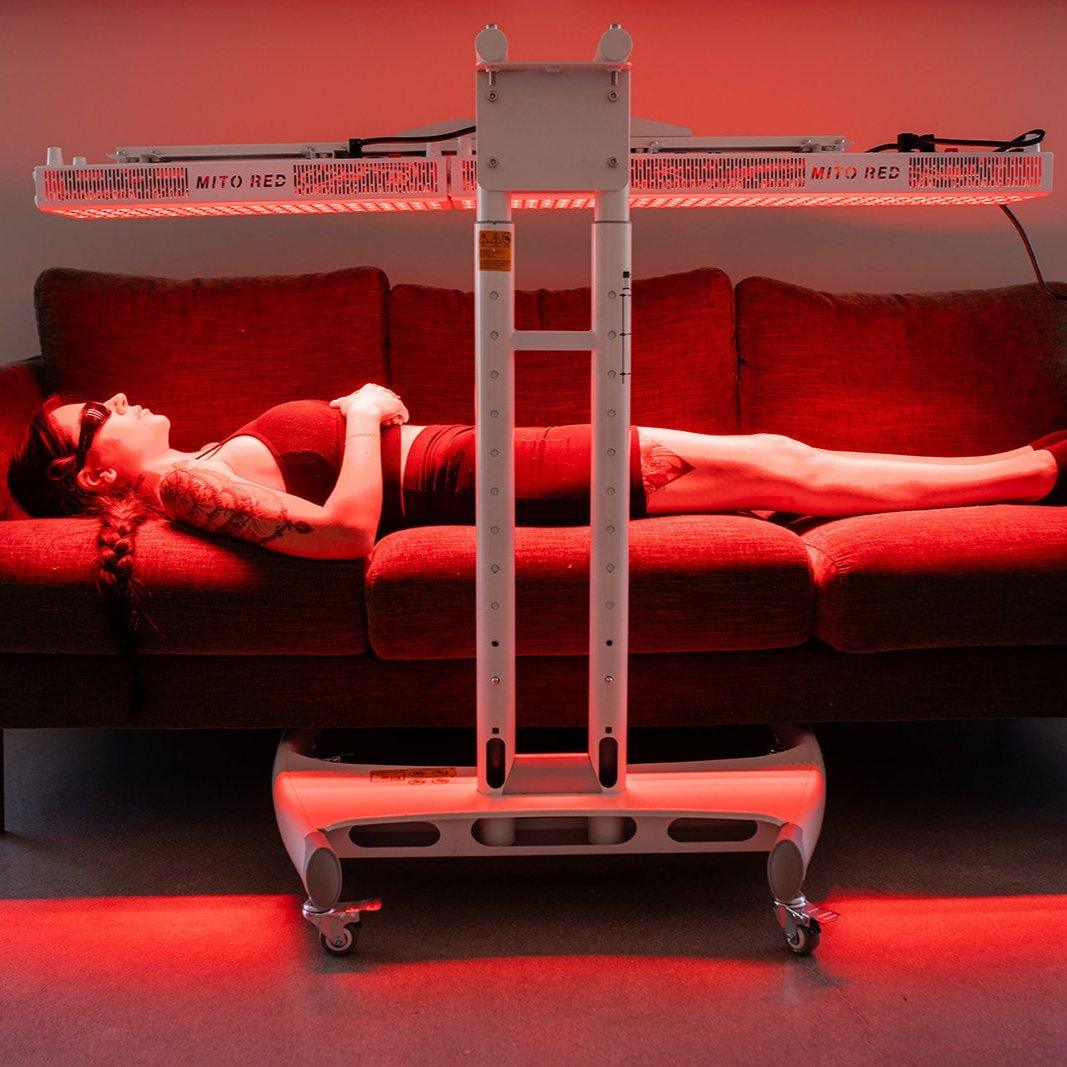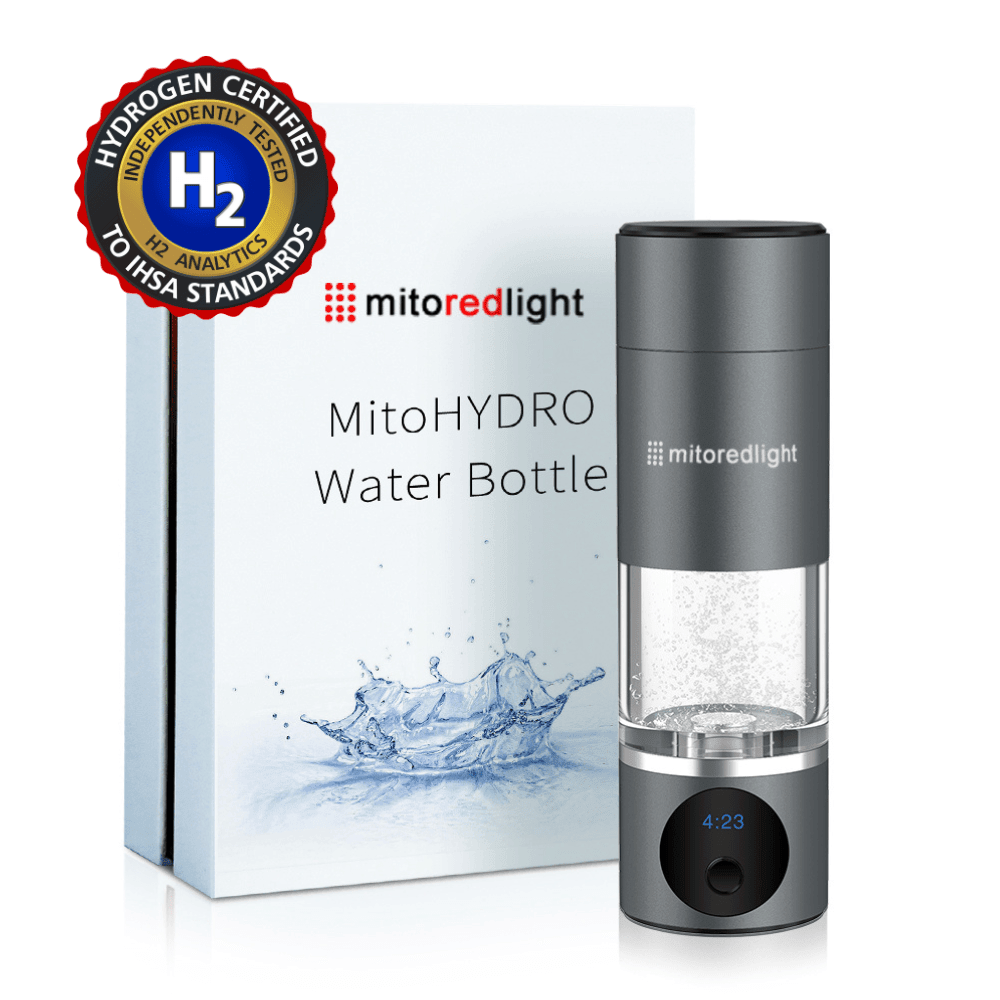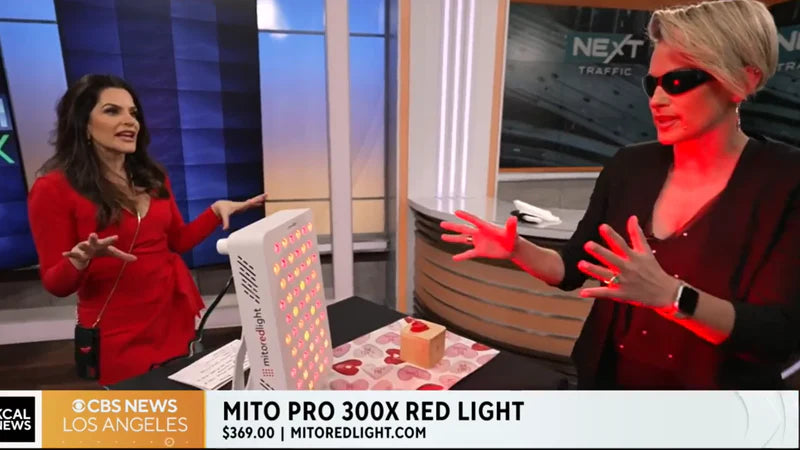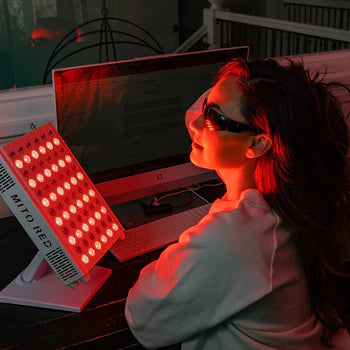DISCLAIMER: Mito Red Light devices are Class II wellness devices aimed at affecting the body through topical heating and supporting cellular function. The information provided in this article and on this site is for educational purposes only and is not intended to imply effectiveness of Mito Red Light devices for any specific application. The information provided in this article and on this site is not intended to diagnose, treat, cure, or prevent any disease, is not a substitute for consultation with a licensed medical provider and should not be construed as medical advice. Click here to read our article on potential contraindications of red light therapy..
Medically Reviewed by | Heidi Wright, BSN, RN, PCCN
Table of Contents
- Skin Pigmentation
- Hyperpigmentation Types
- Age spots
- Melasma
- Post-Inflammatory Hyperpigmentation
- Vitiligo
- Preventing Hyperpigmentation
- Treating Hyperpigmentation
- Hydroquinone
- Chemical Peels
- Red Light Therapy
Hyperpigmentation is a term that describes patches of skin that have more pigmentation than other areas, making them darker than the surrounding skin. Hyperpigmentation can affect individuals with any skin type and while not normally a sign of dangerous medical conditions, it is typically regarded as aesthetically undesirable due to the patchy appearance that it causes on the skin.
There are many different approaches to treating hyperpigmentation, but these depend of a variety of factors, including the individual with hyperpigmentation, the cause of the hyperpigmentation, and how severe the hyperpigmentation is.
Skin Pigmentation
Hyperpigmentation is a term that describes patches of skin that have more pigmentation than other areas, making them darker than the surrounding skin. Hyperpigmentation can affect individuals with any skin type and while not normally a sign of dangerous medical conditions, it is typically regarded as aesthetically undesirable due to the patchy appearance that it causes on the skin. Thankfully, this extremely common (read: everyone’s got it) skin concern is easily addressed with red light therapy devices.
Melanin is created by cells in the skin called melanocytes through a process called melanogenesis. There are two forms of melanogenesis, these include basal melanogenesis and activated melanogenesis. Basal melanogenesis refers to the process of creating melanin that is always active in an individual’s skin. Basal melanogenesis is responsible for an individual’s overall skin tone.
Activated melanogenesis is the production of melanin due to external factors, such as inflammation, skin damage, or even exposure to ultraviolet light. Activated melanogenesis can be beneficial in some circumstances. Exposure to sunlight, for example, will stimulate melanin production, creating a tan. This helps the skin to absorb more sunlight, offering protection to the skin. Activated melanogenesis can have potentially negative effects on skin quality, however, when it occurs unevenly, or when exposure to UV rays results in a sunburn.

Hyperpigmentation Types
There are many different types of hyperpigmentation with varying causes. Understanding the root cause of hyperpigmentation is important for recognizing what treatment options are likely to help.
Age spots
Age spots, also called sunspots or liver spots, are a common type of hyperpigmentation that occurs with sun exposure, especially over a prolonged period of time. Age spots are flat and typically round or oval shaped. They may range in shade from tan to dark brown and can group together, making them more noticeable. These spots can be as big as half an inch across and typically occur in areas that are more often exposed to the sun. “These flat, brown, gray, or black patches typically appear on sun-exposed areas like the face, hands, shoulders, and arms. While age spots are benign and develop due to increased melanin production over time, particularly from sun exposure, many people find them cosmetically bothersome,” highlights Heidi Wright, Registered Nurse.
Although medical scientists do not fully understand how and why age spots are formed, they are thought to be caused by overactive melanocytes that lead to excessive melanin production only in the areas of specific melanocytes. As the name suggests, age spots are more common in people over 50, however, younger people who are frequently exposed to the ultraviolet light in sunlight or in tanning beds may also develop age spots.
Melasma

Melasma is a form of hyperpigmentation that dermatologists believe is related to hormonal changes. Melasma is blotchy patches of darker color skin that may be brown or gray-brown, and tends to affect individuals with darker skin pigmentation more than fair-skinned individuals.
Melasma is most common during pregnancy and may also be triggered by birth control measures that affect hormone levels. Melasma is much more common in women than it is in men, and typically occurs in areas that are exposed to the sun. While melasma normally occurs in the face, it can affect skin in any area that is exposed to the sun.
Post-Inflammatory Hyperpigmentation
Post-inflammatory hyperpigmentation is a form of hyperpigmentation that occurs after damage or irritation to the skin that causes inflammation. Post-inflammatory hyperpigmentation can cause tan, purple, or brown discoloration after any skin-related damage. As with other types of hyperpigmentation, exposure to sunlight can cause the hyperpigmentation to worsen.
Injuries that may cause post-inflammatory hyperpigmentation can have several causes, including:
- Acne
- Psoriasis
- Eczema
- Allergic reactions
- Infections
- Insect bites
- Burns
While anyone can get post-inflammatory hyperpigmentation, this condition is predominate in individuals with darker skin tones. According to the Skin of Color Society, over 65% of individuals who develop post-inflammatory hyperpigmentation are of African descent.
Vitiligo
While not technically a form of hyperpigmentation, vitiligo does cause patchy skin discoloration. Vitiligo is considered different from hyperpigmentation because, unlike hyperpigmentation, the affected areas of skin actually have reduced levels of melanin. Vitiligo can affect individuals with any type of skin coloration and is caused by the death or malfunction of melanocytes.
Vitiligo will slowly spread with the affected patches growing in size. Because vitiligo causes the death or malfunction of the melanocytes themselves, there is currently no known way to reverse or cure it.
Preventing Hyperpigmentation

There are several different methods that people use for preventing hyperpigmentation, but the key way to prevent hyperpigmentation is to protect your skin from the sun. Sunlight contains wavelengths of light that penetrate through the skin and activate melanocytes. While this can create a nice, even tan, exposure to high amounts of sunlight is known to play a contributing factor in the development of age spots and melasma. Using sunscreen with an SPF of 30 or higher is recommended by most dermatologists to keep your skin safe and avoid the development of sun damage.
In addition to playing a role in developing hyperpigmentation, melanocyte-stimulating wavelengths in sunlight also worsen almost every form of hyperpigmentation. Sunlight also increases the speed at which vitiligo progresses and causes darkening of the unaffected skin, making the contrast between affected and unaffected skin more stark.
While avoiding exposure to high amounts of sunlight is important to prevent or reduce the effects of hyperpigmentation, there are other ways to avoid hyperpigmentation. For post-inflammatory hyperpigmentation, especially, avoiding skin irritation and damage is important. This includes not picking at skin injuries that do occur, treating skin conditions like acne that could cause further skin injuries, using insect repellent while outside, and avoiding potential skin injuries.
Treating Hyperpigmentation
There are several different methods for treating hyperpigmentation, but these methods typically fall into one of two categories: skin-altering chemicals or light therapies. Chemical skin treatments are designed to either break down the pigmentation in skin chemically or to cause the skin to peel off, allowing the new layer underneath with less pigmentation to be exposed. Light therapies, including LED facemasks, use specific wavelengths and intensities of light to break down the melanin and return the skin to its normal color.
Hydroquinone
Hydroquinone is a type of skin-bleaching agent that is used in most topical cosmetic treatments that reduce hyperpigmentation. Hydroquinone can be purchased over the counter in low concentrations, but requires a prescription when any concentration over 2% is used. Hydroquinone works by interfering with how melanocytes produce melanin, causing the area that it is applied to create less melanin. These are usually sold as creams or serums that are applied once daily, or once every other day, depending on individual skin tolerance.
Hydroquinone can cause several side effects. The American Osteopathic College of Dermatology warns that some people may have redness and itching when using hydroquinone. This could actually cause hyperpigmentation in the form of post-inflammatory hyperpigmentation. Other side effects could include dryness, irritation, pruritus, erythema, and contact dermatitis. Prolonged use of hydroquinone is also connected with ochronosis, a blueish-black discoloration of the skin.
Chemical Peels
A chemical peel is performed by applying a chemical to the skin that causes the top layer of skin to peel off. Chemical peels can take off varying depths of skin layers, with deep chemical peels producing more noticeable results but taking longer to recover from.
According to the Mayo Clinic, there are numerous side effects that may occur when using a chemical peel. These include:
Redness
- Swelling
- Scabbing
- Scarring
- Infection
- Heart damage
- Kidney damage
- Liver damage
- Permanent skin discoloration
Chemical peels are performed by a doctor, in most cases, and multiple chemical peels may be needed to fully treat hyperpigmentation. Deep chemical peels may take several weeks to recover from.
Vitamin C
Some evidence suggests that vitamin C can help with skin pigmentation issues. “Vitamin C is a powerful antioxidant that can help inhibit melanin production. In theory, this could reduce the appearance of hyperpigmentation. Some studies suggest topical application of vitamin C may offer mild lightening effects,” notes Wright. However, clinical studies show that results, while promising, take time and may not produce the level of skin rejuvenation that a person could get from a peel, or from an effective form of light treatment, like red light therapy.
Red Light Therapy
While a newer form of treating skin blemishes, red light therapy is rapidly becoming a popular way of maintaining skin health. Red light therapy, a type of photobiomodulation, uses low-energy wavelengths of light that penetrate deep into the skin. While ultraviolet wavelengths of light stimulate melanocytes and produce melanin, red and near infrared wavelengths do not. These wavelengths of light instead stimulate mitochondria, the energy-producing organ of cells.
Red light therapy has many known skin benefits. The scientific journal Seminars in Cutaneous Medicine and Surgery reports that red light therapy can:
- Improve circulation and blood flow in the skin
- Protect skin cells from damage
- Increase collagen production, increasing the skin's firmness
- Increase elastin production, helping support skin’s resilience and elasticity
- Reduce fine lines and wrinkles
Red light therapy works by addressing skin cells both in the dermis and epidermis and stimulating the mitochondria inside them. Specifically, red light and near-infrared light target fibroblasts in the skin that are responsible for creating skin proteins, helping the skin make more proteins and increasing skin cell turnover.
More red light could help erase the damage done to your skin by too much UV light.
Mito Red Light
To get the benefits of red light therapy at home, Mito Red Light has LED light therapy devices that fit your lifestyle. Our panels and wearable devices have more diodes per square inch than our competitors and all of our devices are FDA-cleared. Combined with our superior customer service and our third-party quality testing, you can be certain that you’ll get the most benefits for your skin (and the rest of your body) from our devices.
Related Articles:
Red Light Therapy for Bruises: Does It Help?
Does Red Light Therapy Help Rosacea?
Red Light Therapy for Eczema: How It Might Help
Red Light Therapy Benefits Overview
Sources:
The effect of Vitamin C on melanin pigmentation – A systematic review | PMC
